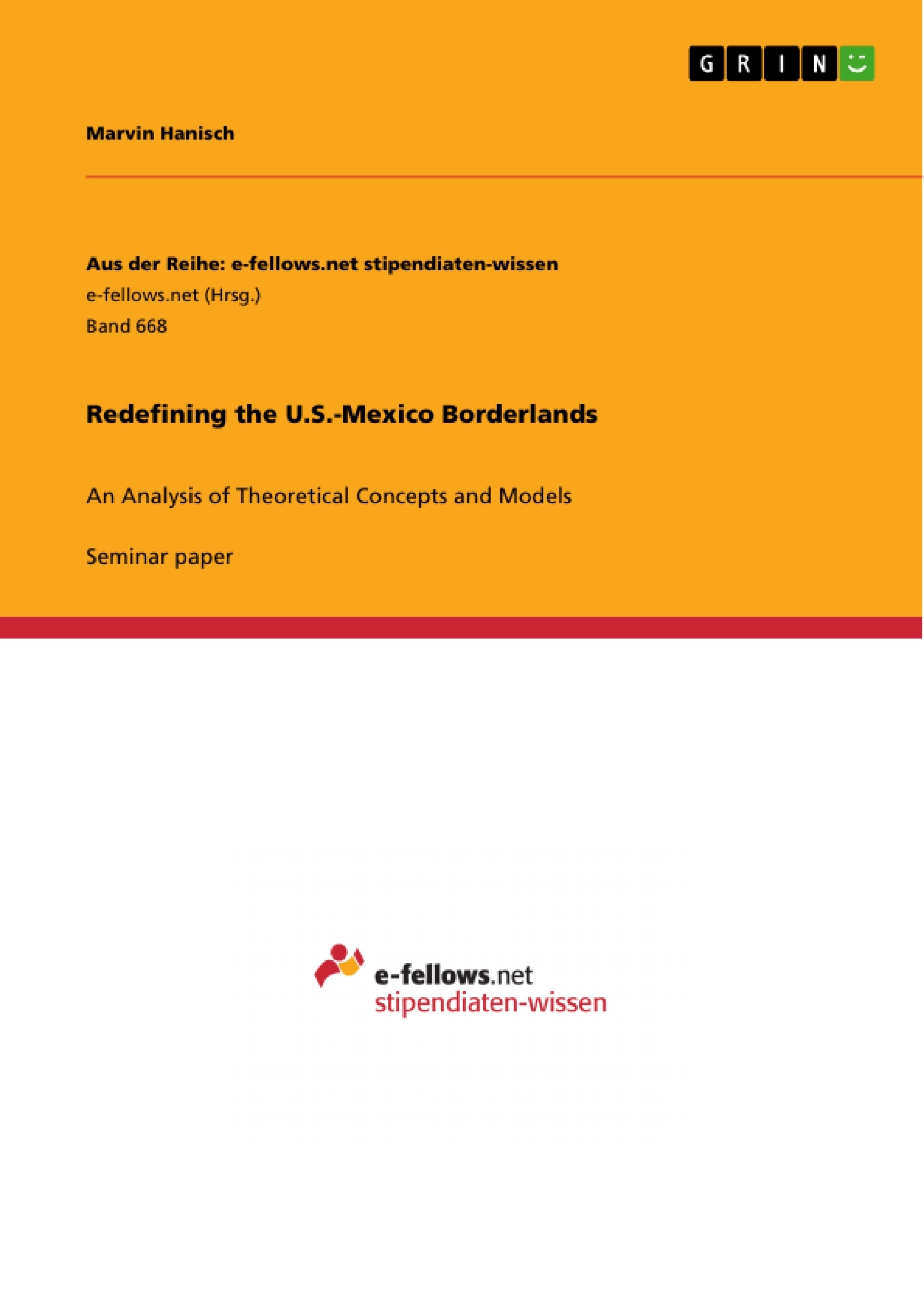The paper analyses and compares different theoretical models of the U.S.-Mexico border regions. Special attention is placed on the models of Martinez, Pick and Butler, and Alegría. These findings are compared to current socio-economic data to review their applicability. Finally, the author amalgamates these ideas and develops a new model on this basis.
Inhaltsverzeichnis (Table of Contents)
:- 1 Introduction: Mexico as the United States’ Shadow?
- 2 Defining the Borderlands
- 2.1 Socio-Geographic Approach
- 2.2 Constructivist Perception of the Borderlands
- 2.2.1 Contact Zone and Transculturation
- 2.2.2 Interaction Zone
- 3 Theoretical Models of the Borderlands
- 3.1 Martinez’ ‘Model of Borderlands Interaction’ and Criticism
- 3.2 Pick’s and Butler’s ‘Model for Marginality at National Borders’ and Criticism
- 3.3 Model for Marginality at the U.S.-Mexico Border
- 3.4 Alegría’s ‘Conceptual Model of Transborder Processes’ and Criticism
- 3.5 Amalgamation of Previous Border Models
- 4 Conclusion: Redefinition of the Borderlands
Zielsetzung und Themenschwerpunkte (Objectives and Key Themes)
: This paper analyzes various definitions and models of the U.S.-Mexico borderlands, aiming to identify a workable definition and theoretical model applicable to this specific border region. The focus is on the socio-economic dimension of the borderlands, specifically the concept of the 'interaction zone' which underpins cultural development and identity. Key themes explored include:- The evolution of the U.S.-Mexico borderlands from a boundary to a borderland and its potential transformation into a frontier.
- The power asymmetry between the U.S. and Mexico, with emphasis on the impact of U.S. influence on Mexican territory.
- The role of transborder interactions, including migration, maquiladora industries, and trade, in shaping the economic and cultural landscape of the borderlands.
- The importance of considering various dimensions, such as territorial extension, intensity, and permeability, in understanding the complexities of borderlands interactions.
- The historical perspective on the U.S.-Mexico borderlands, highlighting its evolution from a period of alienation to increased interdependence.
Zusammenfassung der Kapitel (Chapter Summaries)
: The first chapter introduces the concept of the U.S.-Mexico border as a complex and dynamic space that challenges traditional notions of national boundaries. It highlights the need for a theoretical framework to understand the diverse interactions and cultural processes occurring in this region. The second chapter explores various definitions of 'borderlands,' 'border,' 'boundary,' and 'frontier,' distinguishing between their geographic and cultural dimensions. It emphasizes the role of power dynamics and the influence of dominant cultures in shaping border identities. The third chapter focuses on theoretical models of the U.S.-Mexico borderlands, analyzing models proposed by Martinez, Pick and Butler, and Alegría. Each model offers insights into the complexities of border interactions but also reveals limitations in terms of capturing the nuances of power asymmetries, historical context, and the multi-faceted nature of transborder flows. The fourth chapter presents an amalgamation of the previous models, incorporating nine key categories to provide a more comprehensive understanding of the U.S.-Mexico borderlands. This model highlights the evolution of the border from a period of limited interaction to one of increasing interdependence and economic integration.Schlüsselwörter (Keywords)
: The primary keywords and focus topics include: U.S.-Mexico borderlands, border identities, interaction zone, power asymmetry, transborder interactions, migration, maquiladora industry, economic development, cultural exchange, frontier, contact zone, transculturation, and theoretical models.
Excerpt out of 44 pages
- scroll top
- Quote paper
- Marvin Hanisch (Author), 2011, Redefining the U.S.-Mexico Borderlands, Munich, GRIN Verlag, https://www.grin.com/document/210678
Look inside the ebook



